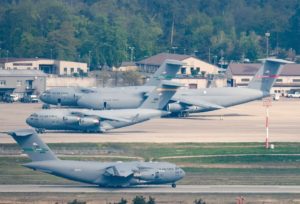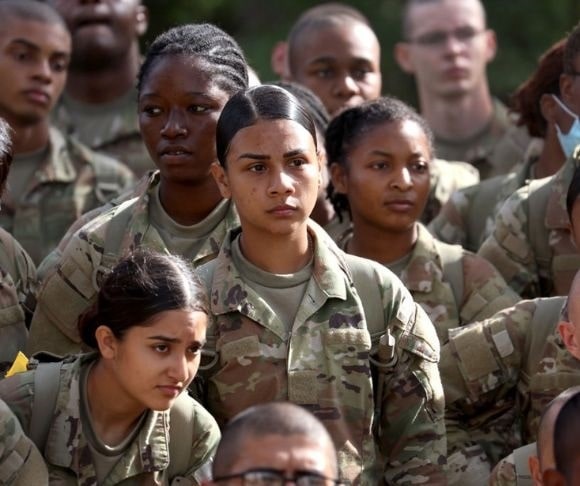The Heritage Foundation released its 2023 Index of US Military Strength on October 18. Unfortunately, the results of the annual analysis do not instill confidence that America’s Armed Forces are trending in a direction to meet the challenges of current and near-future existential threats – despite the recently released Biden administration’s 2022 National Security Strategy (NSS). The latest NSS has become more aspirational than realistic compared with the Heritage assessment. What is encouraging about the 2023 Index is its foundation in real, palpable threats, not popular, media-embraced threats like climate change. Additionally, the Heritage assessment does not claim a stronger military will result from du jour notions like “diversity, equity, and inclusion.” Instead, military strength comes from more effective, available weapons, highly trained and skilled soldiers, airmen, sailors, Marines, and Guardians selected for experience, aptitude, and proficiency.
Additionally, the core thinking that makes the Heritage military capability assessment pertinent and valuable is summed up in the following:
“No matter how much America desires that the world be a simpler, less threatening place that is more inclined to beneficial economic interactions than violence-laden friction, the patterns of history show that competing powers consistently emerge and that the US must be able to defend its interests in more than one region at a time.”
A Standard for US Military Strength
 The Heritage analysts set a standard for sufficient US military capability: to successfully deal with a conflict in “more than one region at a time.” Russia’s unprovoked invasion of Ukraine, the People’s Republic of China’s (PRC) military capability growth and persistent warlike challenges in the Indo-Pacific, North Korea’s continuing nuclear program and refusal to discuss reducing that program, and Iran’s relentless pursuit of atomic warheads are all compelling scenarios for a two-region capability. The idea of the US being able to fight successfully in two geographically displaced areas of the globe is not new. Congress in the FY2010 amended US Code Title 10 mandated the services maintain military personnel end strength sufficient to enable the “United States to be able to successfully conduct two nearly simultaneous major regional contingencies.”
The Heritage analysts set a standard for sufficient US military capability: to successfully deal with a conflict in “more than one region at a time.” Russia’s unprovoked invasion of Ukraine, the People’s Republic of China’s (PRC) military capability growth and persistent warlike challenges in the Indo-Pacific, North Korea’s continuing nuclear program and refusal to discuss reducing that program, and Iran’s relentless pursuit of atomic warheads are all compelling scenarios for a two-region capability. The idea of the US being able to fight successfully in two geographically displaced areas of the globe is not new. Congress in the FY2010 amended US Code Title 10 mandated the services maintain military personnel end strength sufficient to enable the “United States to be able to successfully conduct two nearly simultaneous major regional contingencies.”
The Heritage assessment used five measures for total US military power: “Very Weak,” “Weak,” Marginal,” “Strong,” or “Very Strong.” None of the military services were judged to be “Very Strong.” The report scored the Marine Corps and the US nuclear forces as “Strong.” However, the US nuclear capability was trending toward “Marginal.” Based on the two regional conflict standard, the 2023 Index rates the overall US military capability as “Weak.” But the score given to the US Air Force should be of most concern to Defense Department planners, programmers, and budgeteers. Heritage downgraded the Air Force rating to “Very Weak” in the latest evaluation, which continued a trend of “Marginal” in the 2021 Index and “Weak” in the 2022 Index.
US Air Force Very Weak

Photo by Boris Roessler/picture alliance via Getty Images)
“The USAF currently is at 86 percent of the capacity required to meet a two-MRC benchmark, it is short 650 pilots, the average age of its fighter aircraft fleet is 32 years old, and pilots are flying barely more than once per week across all types of aircraft,” Heritage reported. The failure to generate flying time is particularly curious since, in the latest President’s Budget Request, the Active Air Force flying hour program budget for FY2023 was reduced. The FY2023 funding request for flying hours for “aircrew combat training, maintenance and repair, parts and aviation fuel to support joint warfighter and humanitarian operations” was reduced by $246.9 million, or 22,565 flying hours, from the enacted FY2022 budget. Remember, this is funding to “meet the Air Force’s highest priorities to project prompt and decisive global vigilance, reach, and power to win any fight, any time.” Unfortunately, in an Indo-Pacific conflict, the tyranny of distance will put enormous demands on airpower – and the US Air Force appears not up to that challenge.
The Navy, which the US will depend on most in an Indo-Pacific conflict with the PRC, was ranked as “Weak.” America’s sea service was considered inadequate, with only 298 blue-water vessels to meet the “intensified operational tempo” requiring as many as 400 manned ships. Worse yet, “the Navy’s persistent inability to arrest and reverse the continued diminution of its fleet while adversary forces grow in number and capability” accounts for the lower score. Those “adversarial forces” are not a mystery. “…China remained the most ‘comprehensive security challenge’ to US forces across all areas considered by the report, with the Heritage Foundation citing the technological advances of the Chinese military,” Zamone Perez pointed out in Defense News.
There has recently been turbulence within the Department of Defense and a demonstrable failure of leadership to identify and address real threat problems. The Heritage Foundation’s 2023 Index of US Military Strength is a wake-up call.
The views expressed are those of the author and not of any other affiliation.




